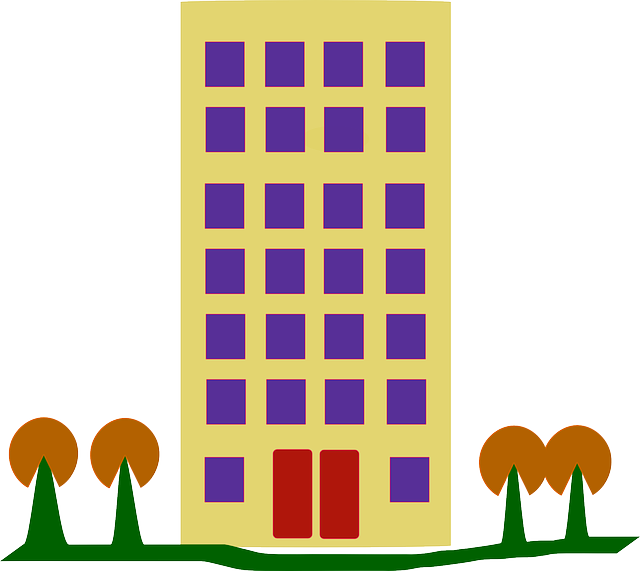Tampines Street 94 Mixed Development EC in Singapore's vibrant Tampines neighborhood is a revolutionary urban living project, offering a unique blend of residential, commercial, and recreational spaces. Strategically located with easy access to transportation and amenities, the development features modern design integrating green spaces for diverse residents. Guided by strict laws like Urban Planning Act and BCA's MUD Guidelines, this project enhances urban livability, ensuring sustainability and prosperity for the community. Developers navigating legal complexities must comply with planning laws, zoning, building codes, and environmental assessments to mitigate risks. These mixed-use projects significantly impact Tampines' future, promising efficient land use, reduced commuting, increased property values, and diverse housing options.
In the vibrant, bustling community of Tampines, the development of Tampines Street 94 as a mixed-use EC (Executive Condominium) project promises to revolutionize the landscape. This article delves into the legal considerations surrounding such developments in Singapore, exploring the key frameworks and implications for developers and homebuyers alike. Understanding these factors is crucial for navigating the complex tapestry of regulations that shape urban living in Tampines and beyond.
- Understanding Tampines Street 94 Mixed Development EC Project
- Legal Framework Governing Mixed-Use Developments in Singapore
- Key Legal Considerations for Developers and Homebuyers
- Future Implications and Impact on the Tampines Community
Understanding Tampines Street 94 Mixed Development EC Project

Tampines Street 94 Mixed Development EC is a transformative project that aims to revolutionize the urban landscape of Tampines, a vibrant and bustling neighborhood in Singapore. This mixed-use development promises to be a game-changer, offering a unique blend of residential, commercial, and recreational spaces. In terms of design, the project envisions a harmonious tapestry of modern architecture and green spaces, creating an appealing environment for residents and visitors alike.
The development’s strategic location in Tampines makes it highly desirable. With easy access to major transportation hubs and proximity to essential amenities, it caters to the needs of a diverse range of folks. As Singapore continues to evolve, projects like Tampines Street 94 Mixed Development EC play a crucial role in enhancing urban livability, ensuring a prosperous and sustainable future for the community.
Legal Framework Governing Mixed-Use Developments in Singapore

In Singapore, the legal framework governing mixed-use developments like the proposed Tampines Street 94 project is governed by a comprehensive set of regulations and laws designed to ensure urban planning, zoning, and development standards are met. The Building and Construction Authority (BCA) plays a pivotal role in regulating and approving mixed-use developments through various statutory boards and policies. These include the Urban Planning Act, which outlines the power of the government to control land use and development, and the Town Planning (Building Line and Height) Regulations, which dictate building lines, heights, and set-backs for different zoning areas.
For mixed-use projects such as Tampines Street 94, developers must navigate additional considerations like the Mixed-Use Development (MUD) Guidelines issued by the BCA. These guidelines provide a framework for integrating residential, commercial, and other uses in a harmonious manner, ensuring that the development complements surrounding areas and enhances the quality of life for residents. Compliance with these regulations is crucial to obtain necessary approvals and permits, ensuring the project’s legality and sustainability within the Tampines community.
Key Legal Considerations for Developers and Homebuyers

When developing a mixed-use project like Tampines Street 94 in Tampines, developers must navigate a complex web of legal considerations. These include ensuring compliance with local planning laws and regulations related to zoning, building codes, and environmental impact assessments. Obtaining necessary permits and approvals from relevant authorities is paramount before breaking ground on any construction. Additionally, developers need to carefully structure agreements with stakeholders, including investors, partners, and contractors, to safeguard their interests and mitigate risks throughout the development process.
For homebuyers, legal considerations are equally significant. Understanding the terms and conditions of the sales and purchase agreement is crucial. They should also be aware of their rights and responsibilities as outlined in the Housing Development Act and relevant consumer protection laws. Engaging qualified legal counsel experienced in real estate transactions can help buyers navigate these complexities, ensuring they make informed decisions when purchasing properties in mixed-use developments like Tampines Street 94.
Future Implications and Impact on the Tampines Community

The development of mixed-use projects like Tampines Street 94 Mixed Development EC has far-reaching implications for the future of Tampines. This type of project integrates residential, commercial, and sometimes recreational spaces, fostering a more vibrant and connected community. As urban areas continue to grow denser, such developments offer efficient land use strategies, reducing the need for extensive commuting and promoting sustainable living.
For the Tampines community, this could mean enhanced accessibility to amenities, reduced traffic congestion, and potentially increased property values. The mix of housing options caters to diverse demographics, attracting young professionals, families, and retirees. Moreover, commercial spaces provide opportunities for local businesses, contributing to economic growth and fostering a sense of community engagement.
The proposed Tampines Street 94 Mixed Development EC project, nestled in the bustling community of Tampines, signifies a significant step forward in urban planning. Understanding the legal framework governing mixed-use developments in Singapore is crucial for developers and homebuyers alike. This article has illuminated key considerations, from zoning regulations to building standards, emphasizing the importance of adhering to local laws to ensure a harmonious integration into the existing Tampines landscape. Looking ahead, this development promises to enhance the area’s tapestry, fostering a vibrant community that reflects the future aspirations of its residents.
